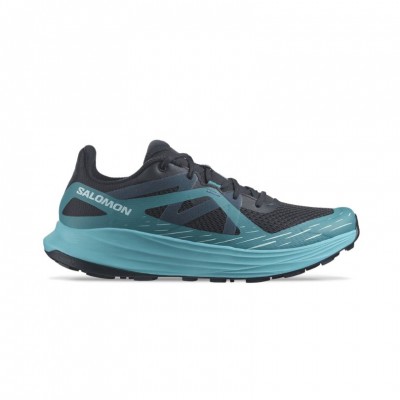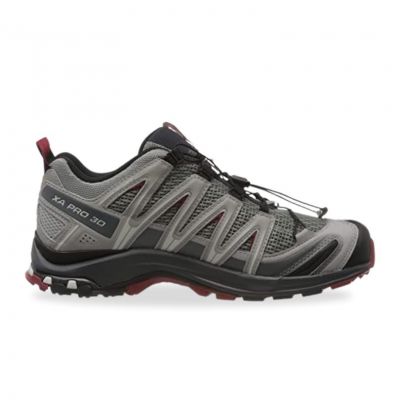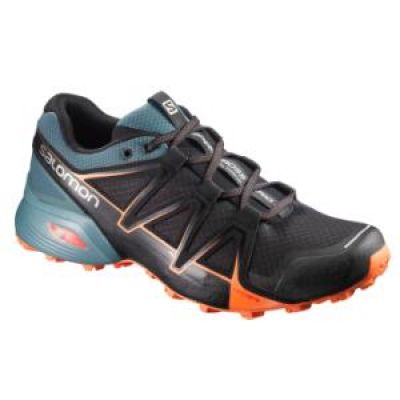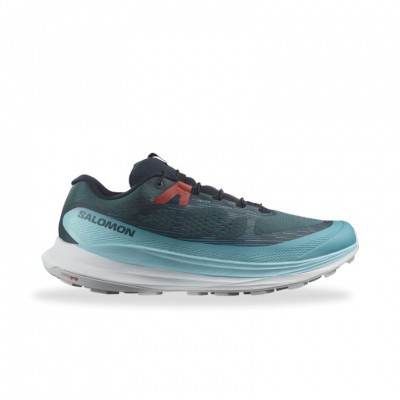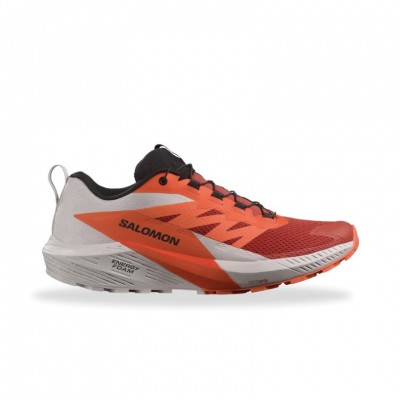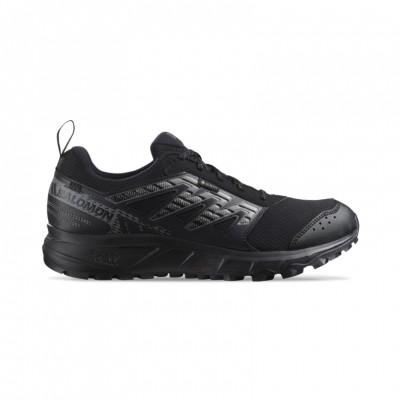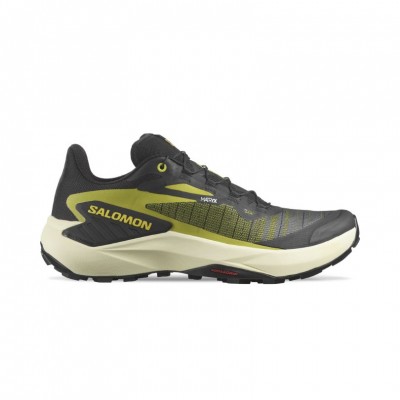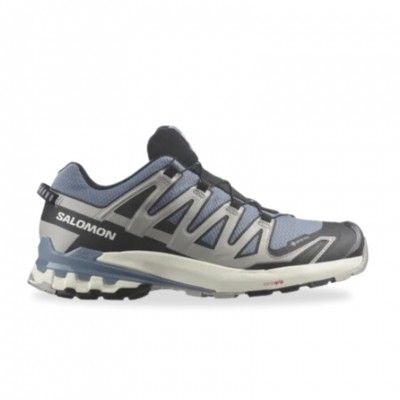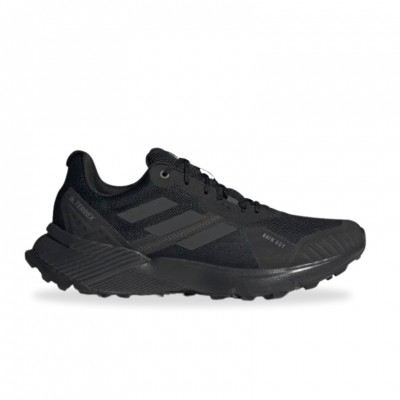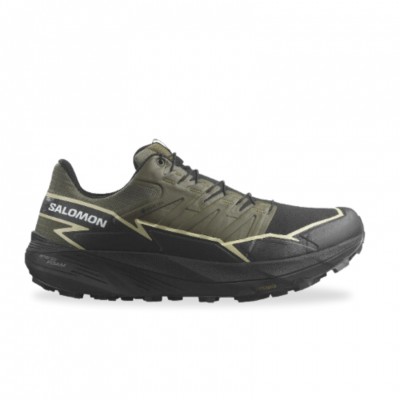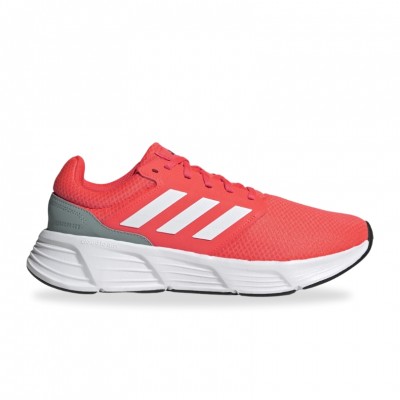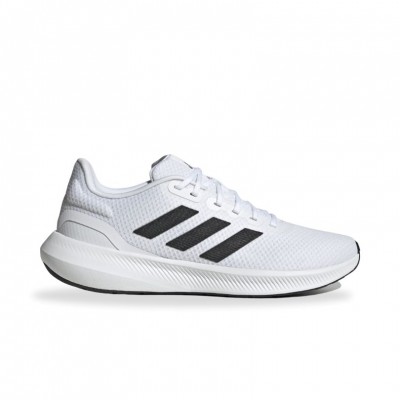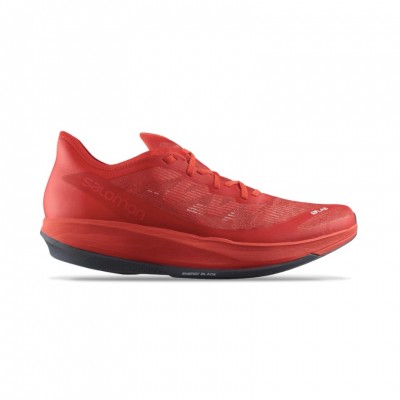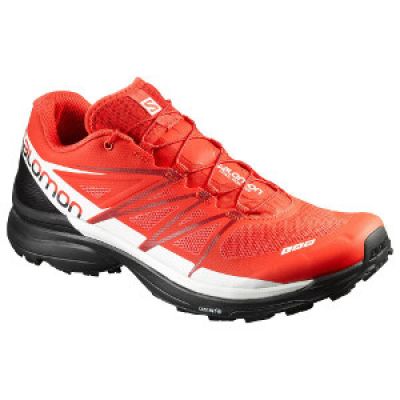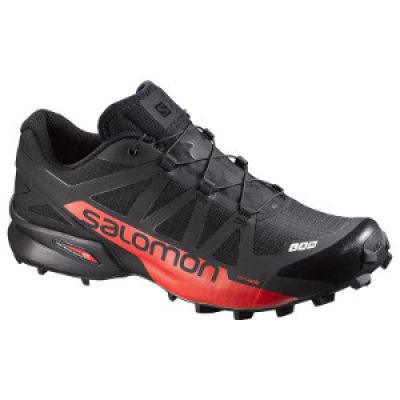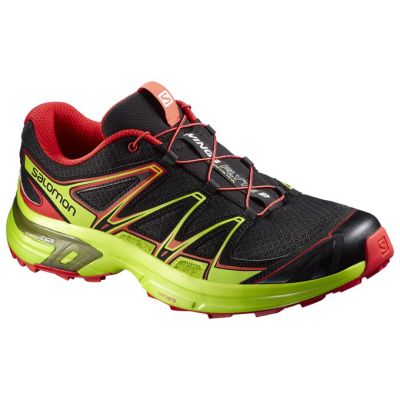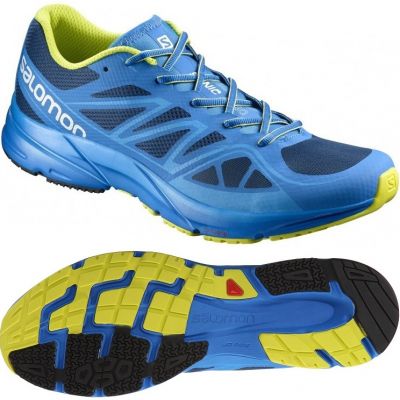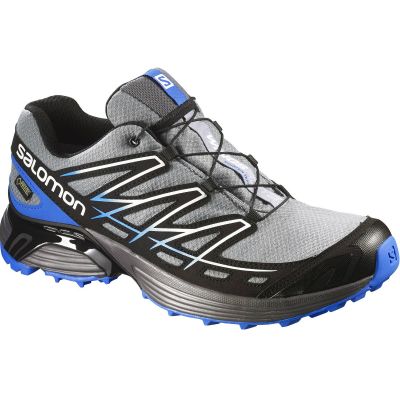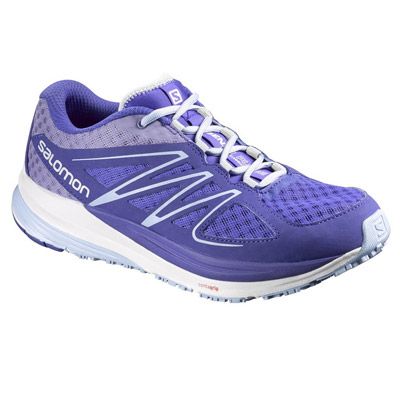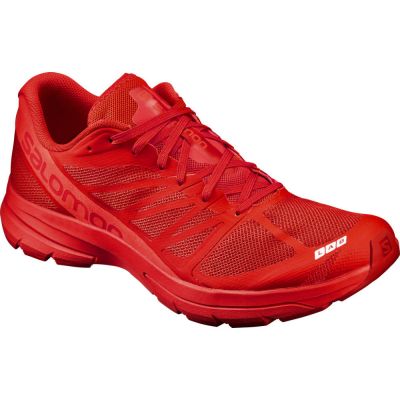Salomon Sonic PRO
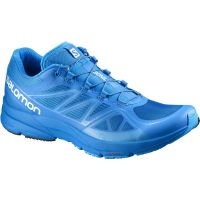
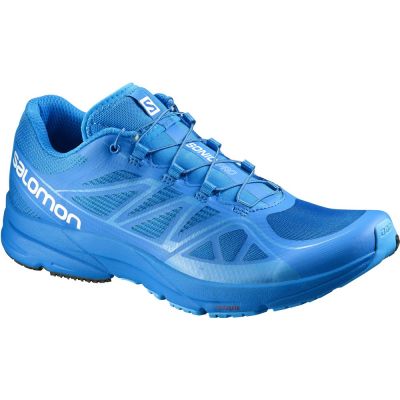
In recent days, we have not detected any prices for: Sonic PRO
Be the first to receive an alert when prices become available.
Products of Salomon related to this research
Characteristics
- Gender
- Men
- Women
- Cushion
- Neutral
- Runner weight
- Medium
- Running gait
- Neutral
- Surface
- Trail
- Use
- training
- Strike
- heel
- Year
- 2016
- Lightness 8.0
- Cushioning 8.0
- Flexibility 9.0
- Responsive 9.0
- Stability 9.0
- Grip 7.0
Salomon has gone the other way around. While many multisport and running brands have been adapting to market demands, introducing and expanding their range of trail shoe models, the alpine brand, with perhaps the widest range of models in different lines of trail footwear, has been exploring new horizons in recent seasons. It did so a few seasons ago by introducing its "door to trail" range, in which they sought a concept of "mixed shoe", multipurpose, allowing the runner to perform with the same guarantees urban approaches to the natural environment and a simple trail, tracks and trails comfortable and without technical requirements, "from the door of the house to the mountain". Here at Runnea, we checked it with the review of the X-Scream 3D.
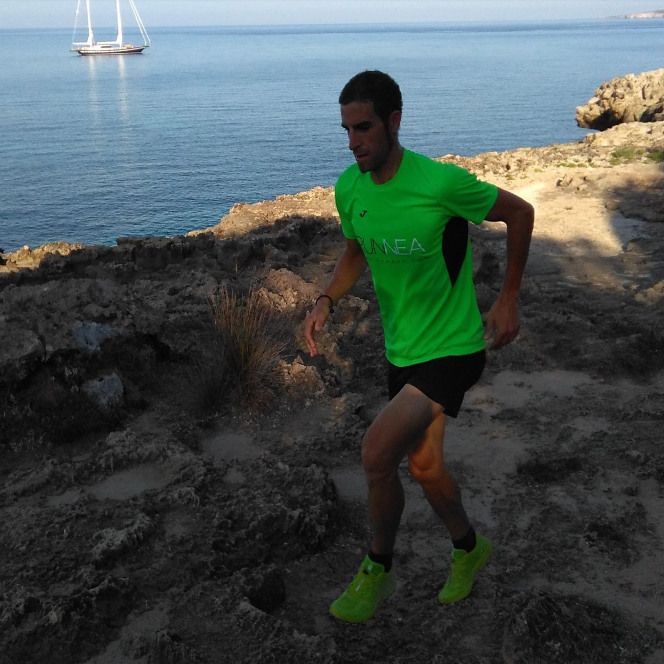
Already at the time I thought it was a very good idea. They offered a more versatile shoe model, suitable for training on asphalt (stairs, series, strength work, proprioceptive, ...) and at the same time functional in natural terrain, but without technical boasts, in which the grip of the sole and the support and protection of the upper did not have a relevant role. That way you can reserve your technical shoes for pure mountain outings.
In this 2016, the French have gone a step further and have clearly differentiated their less technical trail line, the Light Trail from the Running models.
The Light Trail line offers sufficient grip, support and protection for an entry-level trail, with the Sense range in its Propulse, Pulse, Pro and Mantra versions.
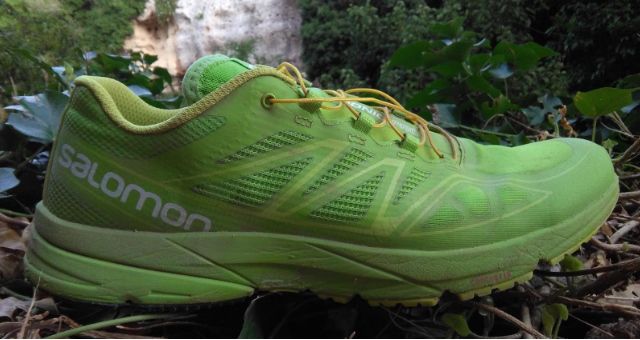

Meanwhile, in the new Running line, you will find:
- S-Lab: where the S-lab Sonic, offer you the adaptation to the asphalt of the successful and charismatic line of Salomon's most technical and lightweight shoes.
- Cushionning: the heir line of this "door to trail" concept but totally adapted to asphalt. Here, the X-Scream 3D are still the standard bearers, in their versions with and without GTX membrane, Foil and the second version of the CityTrail X-Tour.
- Light Weight: the lightest and fastest on asphalt, where, escorted by the Salomon Aero, the spearhead are the Salomon Sonic Pro, of which today we reveal our impressions.
According to Salomon there are three pillars of the model:
- Its lightness, with only 243 grams, one of the lightest and fastest on the market.
- Exceptional fit, thanks to its 3D Flex, Endofit and Sensofit technologies.
- Positive traction on dry and wet terrain with the Salomon Fluid Ride concept: 3D Ride and 3D Grip.
140 euros P.V.P. in 4 designs for men (blue, green, orange and black) and 3 designs for women (green, purple and maroon). Except for the black, all with uniform, bright and vivid shades, I like them very much. In design, Salomon continues without fail.
Taking into account its philosophy, we have tested them mainly on asphalt, in urban trail training (cemented surfaces, stairs, series, ...), but ... it's Salomon, I could not resist and as Runnea does not rest on vacation, we have made them run, and a lot, in a trail vacation destination such as Menorca and its Camí de Cavalls. Historical route that circumnavigates the island and on which the different distances of the Compressport Trail Menorca Camí de Cavalls, which for four years, attracts to the island in mid-May hundreds of European trail runners in search of cliffs, coves, Mediterranean forest and paths with ancestral stories are vertebrate.
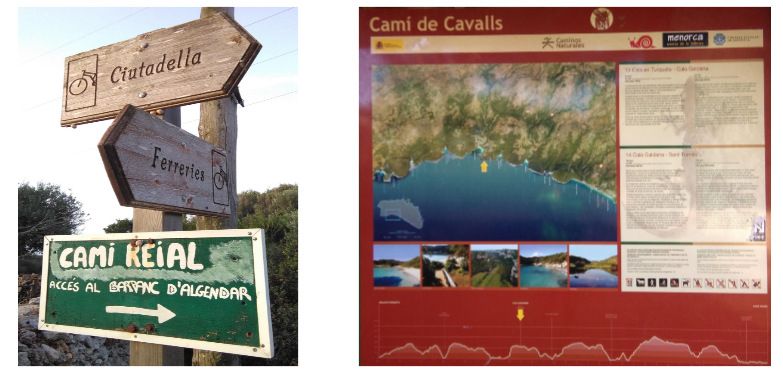
However, let's see how Salomon has adapted to the asphalt and if the three pillars on which the brand supports the model are stable or if we find any leak. Let's run!
MIDSOLE AND CUSHIONING
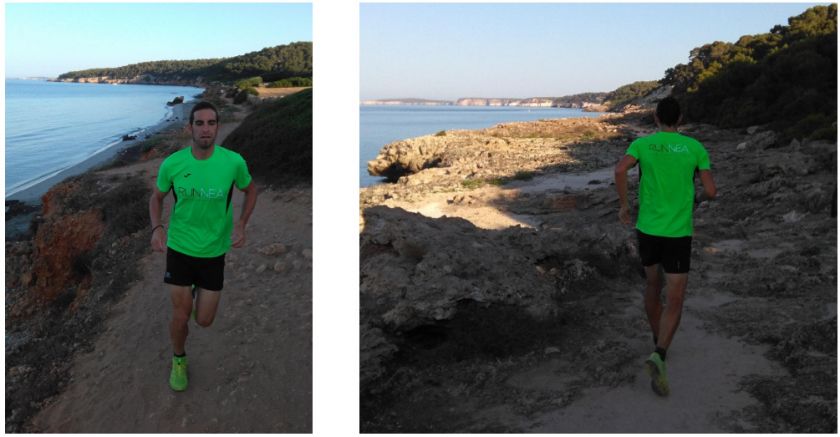
The midsole is composed of a compressed EVA, called Energycell+ by the brand, which is responsible for cushioning the stride, and seeks to give us back the energy of the reception, through the rapid recovery of the deformation of the midsole foam, favoring the impulsion of the stride, under the concept of "reactivity".
In the plantar arch, visible from the sole, a piece more rigid than the EVA of the midsole, the Profeel Film, provides the necessary stability to the stride.
Highlight:
Although they have an intermediate drop of 8 mm, and a cushioning that can be considered remarkable, if you are one of the popular runners whose priority is cushioning, or you are in a medium-high weight, you will miss some more cushioning, especially in the heel area, during the reception of the footprint, if in addition, you also do not have a very refined running technique.
However, for light-medium weight runners with better technique, less heel strike and faster paces, the Sonic Pro more than meets the cushioning requirements of a fast and light road running shoe.
For your reference, I only run on asphalt for occasional series training, hill progressions,..., or on some runs when I can't "step on the ground" due to force majeure, I have a heel and I'm stout and even being aware of not being with a top of the range cushioning model, at no time have I noticed not being able to get out of each step with a fluid and rhythmic cushioning. However, I would not use them for long runs. In my case, that is.
Opportunities for improvement:
I think, due to its low weight compared to other similar models from other brands, Salomon could afford to further increase the EVA in the midsole, assuming an increase in the overall weight of the shoe, to make it have exceptional cushioning, which added to the rest of the virtues of the model, would make it a reference option for the popular runner looking for a cushioned and stable shoe to devour kilometers.
I still don't notice the concept of "reactivity", as in other models that, like this one, sell in their midsoles the capacity of the materials to return part of the energy invested in the cushioning to favor the impulsion of the stride, under names similar to the Energycell+. I insist, personal appreciation. I believe more in a good running technique that limits heel strike and favors a quick transition between landing and impulsion under the concept of "active ankle".
SOLE
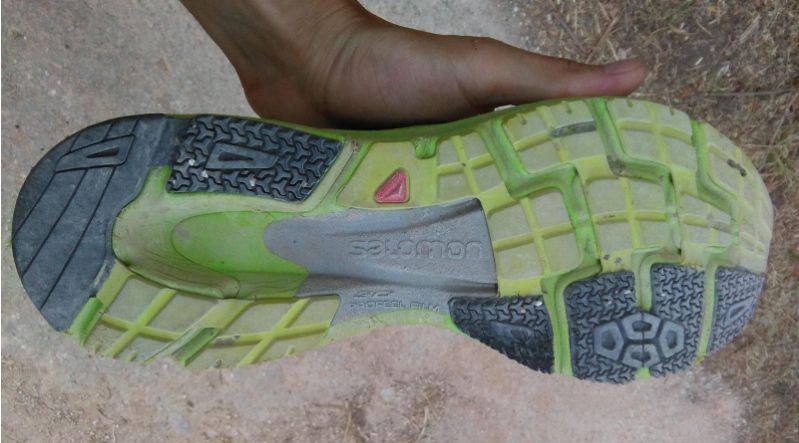
The outsole of these Salomon Sonic Pro has a design and composition very similar to the outsole of its big sister, the S-Lab Sonic. With the classic rubber with which the French brand assembles its soles, Contragrip, it offers a U-shaped ground contact surface in the heel that joins the outer part of the plantar arch to the forefoot, leaving the space libre for the aforementioned Profeel Film. The black rubber, with greater traction, is reserved for the heel area, where the foot strikes the ground first, and for the 1st metatarsal area, the drive zone, two particularly delicate areas of the sole, in terms of grip, traction and durability needs. In them, as you can see in the photo, there are what we could call "small multitacos" of triangular shape, except for the multidirectional pentagons of the first metatarsal head. The rest are typical asphalt model lugs, furrowed by three zig-zag flex grooves in the forefoot and two in the rearfoot.
The midsole and outsole assembly is very flexible at the metatarsal head, it can be easily folded with one hand without exerting too much force, which is appreciated in the final impulsion of the stride, giving the model an agile and fast response in races at higher paces and in exclusive forefoot support (stair progressions and running technique exercises).
The small multidirectional lugs in the landing and propulsion zone have also responded satisfactorily on roads, trails and tracks, including rocks and beach sand. This makes me sure that they are an option for that asphalt model that you can face stretches of natural terrain without fearing for your safety, loss of adherence to the terrain or running out of sole in a few kilometers. They have resisted very well (for the moment) to the wear of the most rugged terrain and not so grateful for the durability of materials such as asphalt. Of course, the midsole has suffered more pinching and tearing than in light trail models.
Opportunities for improvement: while recognizing the improvement in recent years, Contagrip needs to continue working on the grip of its soles on wet terrain. Yes, also on asphalt and in town. Even more so, as there have been situations on sidewalks and pavements, especially slippery, where with four drops, the Contagrip soles "take on water" where other models offer more safety.
TAL?N

The heel, with a low profile, has a well reinforced and protected frame in its lower and central part, which ends in a collar, not too padded, which surrounds the ankle.
I emphasize: the heel is perfectly supported and stable throughout the entire stride cycle and although a priori the little padding may seem an excuse to reduce weight at the cost of comfort, nothing at all, false impressions. No chafing is noticeable, the fit is snug and comfortable.
As you can see in the photo, the midsole projects outwards, increasing the contact surface with the ground, increasing the feeling of stability, in a perfect balance between agility and responsiveness of a fast but stable shoe.
I also like the alpine house logo centered on the heel with reflective material. Making yourself visible is essential, also in the city.
Opportunities for improvement:
I don't usually wear it, and so I haven't missed it, but just in case, I'll comment. The model lacks the typical loop in the form of a handle that helps to put it on. In case you are one of those who use it....
INSOLE AND LAST
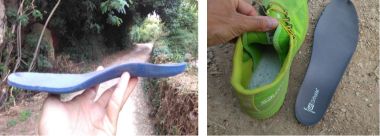
The Sonic Pro includes a high quality Ortholite insole, which with its 4 mm of average width offers extra cushioning and comfort in the footprint.
The last of the Sonic Pro is a little wider than that of its big sister the S-Lab Sonic.
Highlight: the quality of the insole can be seen at first glance and is corroborated with the passage of kilometers and hours of training. Very good resistance and durability, ergonomics and no bad odors.
Opportunities for improvement: just an observation: the width between the 1st and 5th metatarsal is wider than that of a more responsive and responsive shoe, but be careful if you are used to wide lasts or your foot has a special width, adjust the size well and take into account the expansion of the fabrics over the hours in long runs or in hot situations.
UPPER
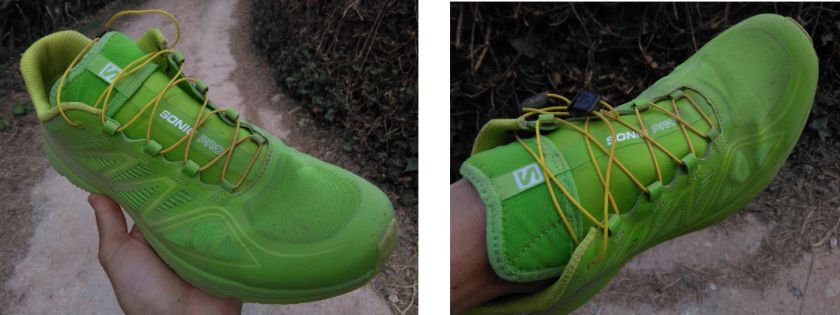
In the upper of these Sonic Pro, Salomon does not risk and bet on classic technology and contrasted in other successful models in its trail line. A mesh under the concept of 3D Flex, multi-drilled on the sides (you can even see your fingers through it) and more dense and resistant in the forefoot, complemented by the set of Endofit (a kind of internal sock sewn on the sides to the midsole and that serves as a tongue) and the Sensofit (the straps that in various directions serve as buttresses to hold the foot and are thermosealed to the mesh). Another Salomon classic that appears in the Sonic Pro is its famous Quicklace quick lacing system, with the pocket at the top of the Endofit tongue to insert the excess.
Highlight
The upper is, in my opinion, the crown jewel of the Sonic Pro. The quality, finishes and heat seals are reminiscent of the Speedcross Pro, the Wings Pro and even the S-Lab. Salomon has been able to adapt the experience of the best technologies of its uppers, proven in the mountains, to the asphalt. They have reduced the weight of the model, but the performance of the upper is intact.
It is not only a question of aesthetics, but the fit, support, convenience and comfort is exceptional. The 3D Flex mesh, formed by the Endofit and Sensofit make a perfect team in this sense.
The Endofit, as an internal sock fits like a glove and with the shoe adjusted, the instep is perfectly wrapped and wrapped with a great feeling of comfort, support and protection.
The Sensofit offers an external adjustment system that helps to complement the previous sensation, it is like the external shell that fixes the foot but without a feeling of excessive compression, quite the opposite, a flexible support, which helps the foot to vaya subject but at the same time with enough freedom to adapt to the movements of each step. This is where the flexibility and elasticity of the upper materials are corroborated.
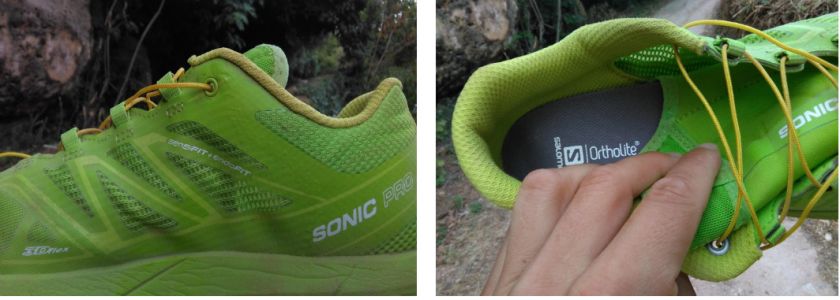
When I took it off the asphalt, I also liked that the toe box is more protected than it usually is in other asphalt shoes. A legacy of the trail, but that does not add excessive weight to the model and is perfectly integrated into the rest of the upper.
It has good breathability and consequently, they get wet quickly, but drying is also just as fast. A little slower in the forefoot, where the upper membrane is thicker and more resistant. Even so, I liked the idea of gaining resistance even if it is against breathability in this sensitive area of the shoe, where we see other asphalt models tearing due to the effect of the flexibility in the head of the targets.
The general feeling is that the outsole will be fully polished and the cushioning system will not give more of itself, before seeing the upper deteriorated enough to change shoes.
Opportunities for improvement:
Nothing interesting to contribute in this regard. I only found the excess of the Quicklace system to be excessive.
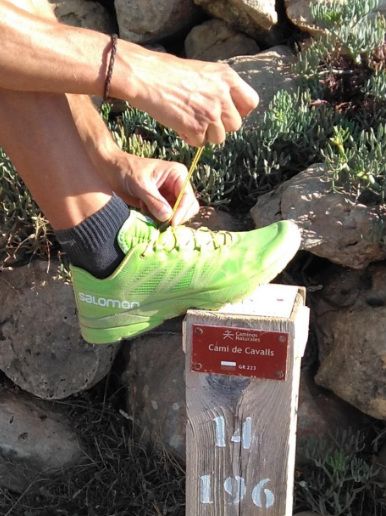
TO WHOM AND FOR WHAT PURPOSE? WHO WOULD RECOMMEND THE SALOMON SONIC PRO?
- GENERAL EVALUATION: excellent fit and support, in a cushioned shoe without being top of the range, light, flexible and fast without being a super-flyer, as they are a little wider and more stable than the S-Lab Sense range. With an agile, fast and safe response in stair progressions, asphalt slopes, technical exercises, series and fast runs.
- TERRAIN: asphalt, although due to the grip and traction of the sole and the protection of the toe cap, they can be used on tracks and trails without technical demands and grassy areas of parks, being aware of the greater wear and tear they inflict.
- RUNNER: neutral footed, light to medium weight (no more than 75 kilos), with a normal last (beware of wide lasts), looking for an intermediate drop and not requiring exceptional cushioning. More popular and less technical than the typical runner for whom the S-Lab Sonic is designed and who is running between 3'45 and 4'45 min/km at medium paces.
- DISTANCE: for training and races on asphalt of short and medium distances (from 5, 10 to half marathon). In my opinion it lacks more cushioning for longer distances.
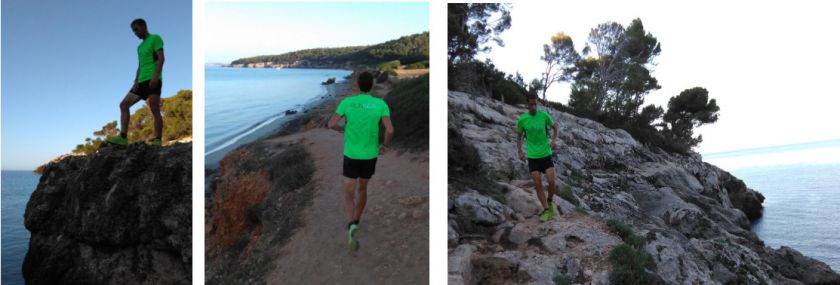
STRENGTHS
- Lightweight and flexible
- Fit and support
- Upper finish
- Cushioning
POINTS OF IMPROVEMENT
- Heel cushioning.
- Outsole grip in wet conditions.
RUNNEA.COM TESTER RATING: 8.1
- Lightweight: 9
- Flexibility: 9
- Stability: 8
- Cushioning: 8
- Responsiveness: 8
- Grip: 7
CHARACTERISTICS:
- Gender: male (same model available for women)
- Cushioning: good cushioning
- Surface: asphalt
- Foot condition: normal
- Weight: 243 grams (in male model)
- Constitution: up to 70 and 75 kilos.
- Use: training and competition for medium weights
- Foot support: heel
- Drop: 8 mm (24 mm - 16 mm)
- Gait: neutral
- Average pace: 3'45 - 4'45 min/km.
Similar
User reviews of Salomon Sonic PRO
Be the first to leave a review
